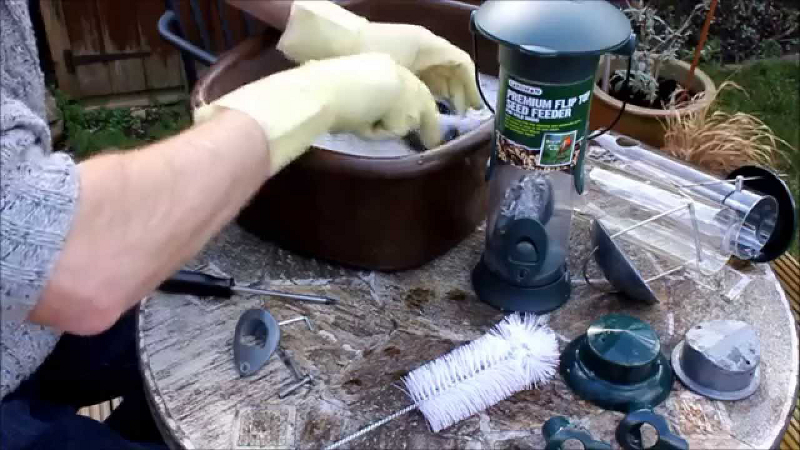Now is a great time to give your feeders a good cleaning and needed maintenance. If you need to replace a cracked tube, have missing perches, or whatever the issue, bring your feeder to us to see if we can help. Many of the feeders we carry offer lifetime warranties and many parts are available and on hand. We are happy to fix feeders whenever possible.
We cannot stress enough the importance of cleaning your feeders on a regular basis. As needed, or every couple of months at the very least, is a good guideline. Dirty feeders can be a very unhealthy environment and diseases that affect wild birds may be shared. Wet weather is usually the catalyst for moldy conditions and it’s during those times you need to pay very close attention. Lately it has been very wet.
No feeder is maintenance free and moisture finds a way in to even the very best quality feeders. Follow some of these simple guidelines to keep your feeders in good shape. To clean a feeder you may use warm soapy water and whatever available utensils you have that will work with your particular feeder. If a feeder has become moldy you may use a mild (10%) bleach and water solution. We carry long handled brushes to make cleaning a tube feeder easier. For platform feeders an old spatula is very handy. Clorox wipes are handy for tube feeder ports and hard to reach spots. Be sure to rinse and dry thoroughly before refilling.
Keeping the ground below the feeders maintained is also a good idea. A significant build-up of shells and seed can present problems, again, worse when it’s wet.
Feeding birds is fun and offers us a closer look at beautiful songbirds. Help them even more by providing a clean, safe environment.
If you see a sick bird at your feeders take them down immediately and give them a good cleaning. Wait a few days before putting them back up. House finches and Goldfinches are among the most susceptible to avian diseases passed along at feeders. Here are some of the brushes we carry at the store.
These large brushes work great for birdbaths and cleaning out large feeder trays.
Use these long brushes to clean out larger tube feeders.
Hummingbird feeder brushes work well on seed feeders too. especially those hard to reach areas.







